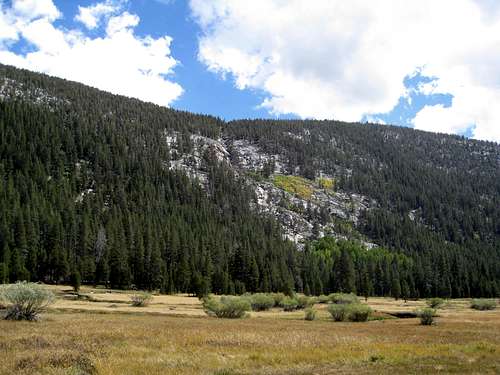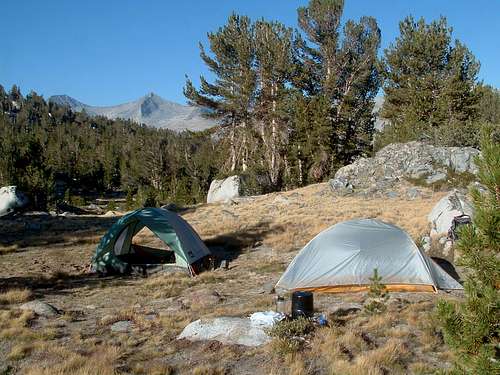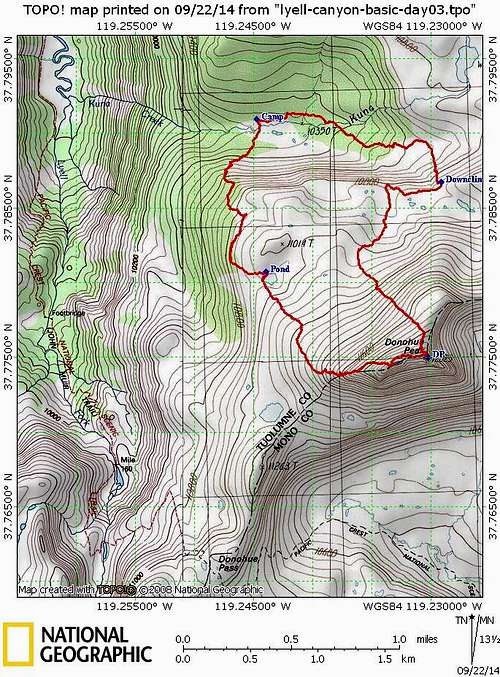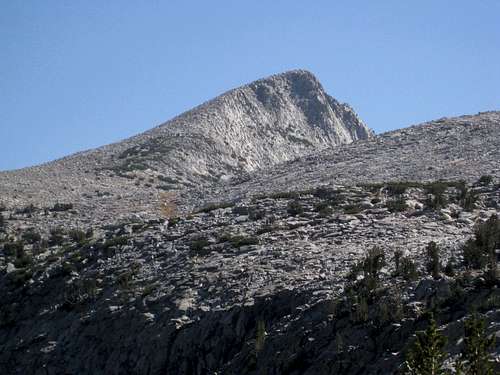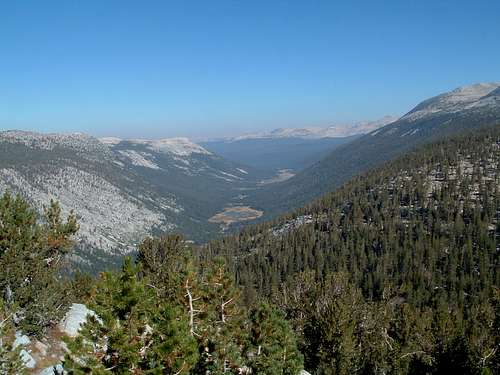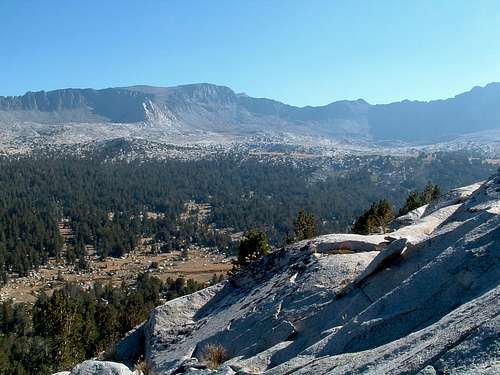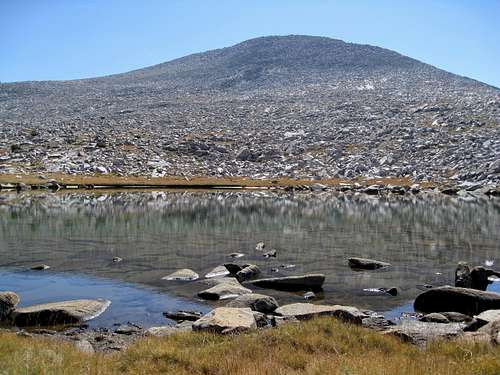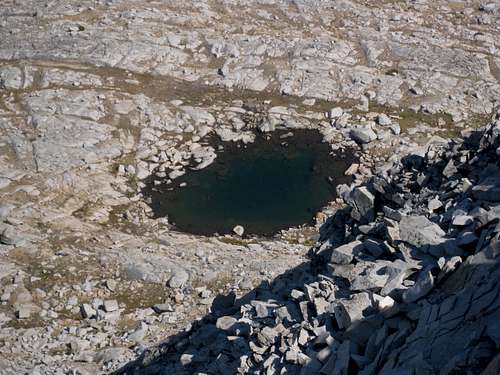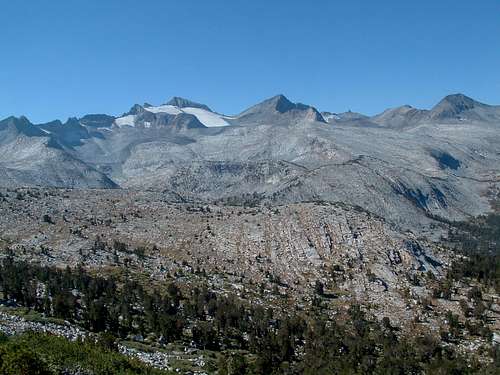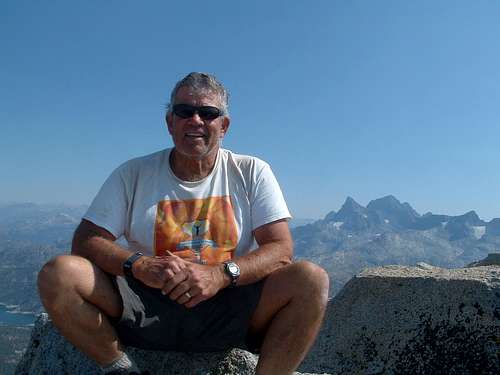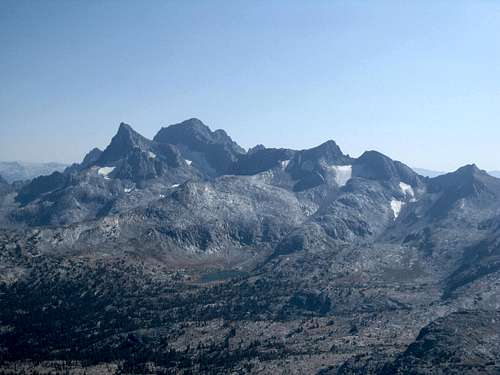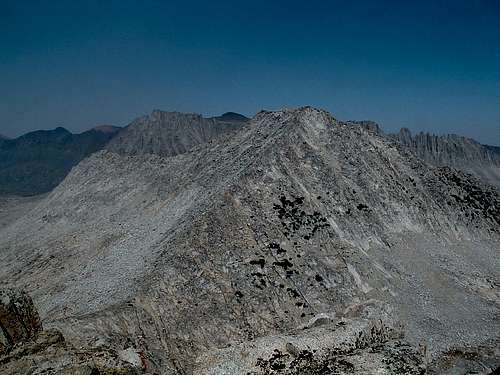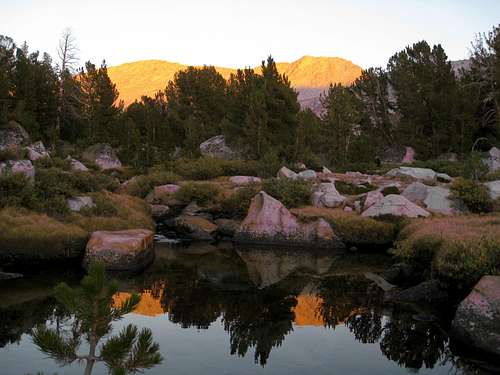|
|
Mountain/Rock |
|---|---|
|
|
37.77493°N / 119.23042°W |
|
|
Summer |
|
|
Trip Report: Donohue Peak
Donohue Peak (DP) is located on the southeast boundary of Yosemite National Park (37.7749301,-119.2304249) and its 12,029 foot summit overlooks Lyell Canyon and Waugh Lake, as well as a series of peaks including Mt. Lyell, Mt. McClure and more to the south (https://www.summitpost.org/donahue-peak-john-muir-trail-peak-bag-opportunity/496711). Donohue is sometimes misspelled as Donahue and online search results may be improved by including the misspelled version. As part of a longer backpacking trip, we camped in the Kuna Creek meadow at an elevation of 10,350 ft. overlooking Lyell Canyon (37.790956,-119.244729). Even though it was a severe drought year, the creek was flowing nicely. There is no trail up to the Kuna Basin, so we were definitely off the beaten path (Fig 01). Signs of bear abounded: fresh tracks, scat and large rocks mysteriously moved from position. During the day deer leaped as we passed by and at night the coyotes howled. We intended for this camp (Fig 02) to be a launching point for trips to Donohue, Mt. Andrea Lawrence and the Lost Lakes. However, because climbing Donohue took longer than we had hoped, we forwent the other objectives.
The Hike
From our camp in Kuna Creek meadow, we set out at 9AM on Sept 10, 2014 in a southerly direction, going around a large granite cliff which overlooks the upper (southern) end of Lyell Canyon. Figure 3 is a map based on our GPS track. We ate lunch at a small pond, which is approximately northwest of DP (37.78080,-119.24399). From the pond, we began ascending the west slope of DP. From the west slope, we saw good views of Mt. Lyell to the southwest. From this position we also noticed a second small pond in the foreground (Figure 8) which lies about ¾ of a mile NNE from Donohue Pass and about ¾ of a mile WSW from DP. We worked our way east just below the ridge. My hiking partner, Jay Rosenthal (‘Rosenclimber’), recalled a ‘false summit’ to the west of the true summit. We found the false summit, descended a bit and continued east, finally reaching the true summit at 3:03PM. A fire was burning in Little Yosemite and atmospheric conditions were hazy. Nevertheless, we enjoyed the wonderful views in every direction. Especially compelling were the views of Banner Peak (12,945 ft.) and Mount Ritter (13,143 ft.) to the south - jagged gems, ringed in a setting of gorgeous glaciers and lakes. Just east is the newly-named Mt. Andrea Lawrence (Figure 16).
We descended, heading north towards a high subalpine meadow from which we hoped to follow a stream and locate a break in the cliff that goes roughly east-west and defines the southern wall of the Kuna Creek meadow. A very pleasant walk to the edge where the stream spilled over led us to a cliff, so we headed a bit further east on this wide bench and down-climbed through a steep boulder field (37.78672,-119.22926). The boulders were recently scratched, chipped and broken, which was a bit eerie. We bushwhacked through the Kuna drainage, arriving back at camp at 6:20 PM. Round trip according to my Garmin Etrex was 5.12 miles with an elevation gain of about 1600 feet.
Reflections
Even though from a distance Donohue may look easy, gentle and straight-forward, in practice the route finding can be a challenge and the terrain difficult. Because much of the rock is broken up into large boulders (i.e., “talus”), the going can be very slow. Note that it took us six hours to get to the top of this Peak. If the going had been easier, it should have taken no more than three hours. The first ascent of this Peak, ascribed to Sergeant Donohue, was said to have been made on horseback. By careful route-finding that might have been possible for perhaps 80 percent of this climb, but near the top we can only presume that the Sergeant dismounted and went the rest of the way on foot.We also made the climb unnecessarily difficult by trying to ascend the west ridge of DP. It would have been easier to go east from the pond until reaching a position northwest of DP and then ascending. There are sandy and flat spaces on that part of DP which are easier to navigate than the bouldering along the west ridge.
The GPS device came in handy on this trip – we used it frequently. It’s very difficult to tell which part of the summit ridge is really the summit. The GPS saved us time and energy in getting to it. As noted previously, there are no trails in the Kuna Basin. The GPS was a good back-up in case we had trouble finding our way back to camp visually.
We rate one move within about 100 feet of the summit as class 3 because you have to pull yourself up using your arms and there is also a bit of exposure. Remember how you came up for the climb down.
Additional Figures
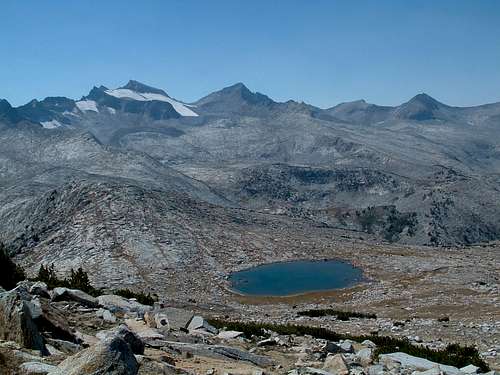
Fig 08. A different pond to SW of DP with Mt. Lyell in the background. Seen from the west ridge of DP.
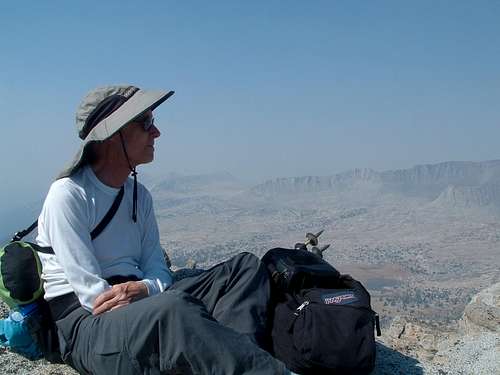
Fig 12. Rosenclimber on top of Donohue Peak, Kuna Crest in background, smokey atmosphere from various fires.


